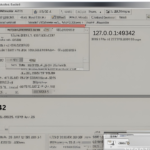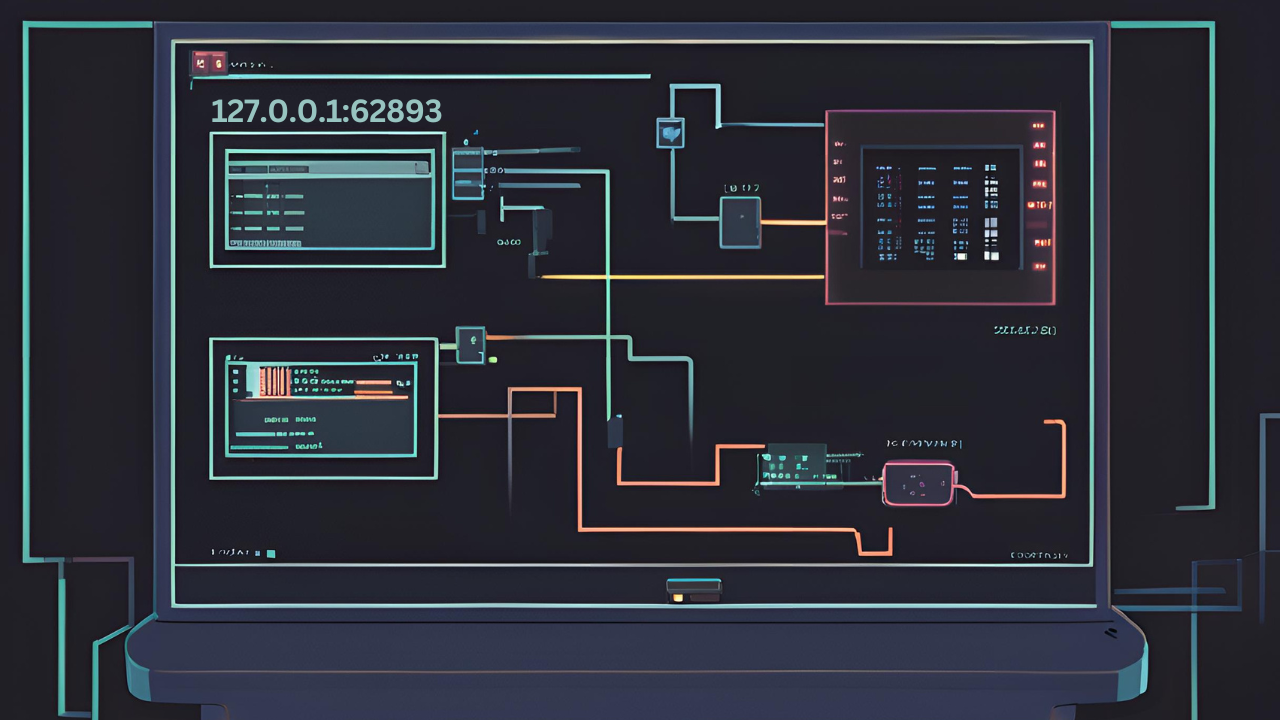Certain terms and concepts carry significant weight in the vast world of Networking, especially for those involved in development, IT, and cybersecurity. One such term is “127.0.0.1:62893,” a combination of an IP address and port number frequently encountered in various technical scenarios. Understanding the intricacies of this combination can enhance one’s grasp of network functions and facilitate more efficient troubleshooting and development processes.
What is “127.0.0.1:62893”?
To simplify, “127.0.0.1:62893” consists of two fundamental components: the IP address 127.0.0.1 and the port number 62893. Each serves a distinct purpose in Networking, and together, they point to a specific service or application running on a local machine.
127.0.0.1: The Loopback Address
The IP address 127.0.0.1 is commonly known as the loopback address. In simple terms, it refers to your computer. This address is reserved for testing and internal communication, meaning it never leaves your device or enters the broader internet. It’s like talking to oneself but in the realm of Networking. When you access 127.0.0.1, you’re effectively instructing your computer to communicate with itself. This is crucial for various scenarios, such as testing web servers or other applications before they go live.

62893: The Port Number
The port number 62893 acts as a virtual gateway on your computer. Ports are designated points of access where applications or services can send and receive data. Just as a specific door in a building might lead to a particular room, a port number directs network traffic to a specific service. The number 62893 isn’t reserved for any standard service; rather, it’s typically chosen dynamically by the operating system or an application.
Common Uses of “127.0.0.1:62893”
The combination of 127.0.0.1 and port 62893 is most often associated with local development and testing. However, depending on the system’s needs and configurations, its usage can extend beyond these scenarios.
Also Read: Your Topics | Multiple Stories: A Deep Dive
Web Development
One of the most common uses of “127.0.0.1:62893” is in web development. Developers frequently use the loopback address 127.0.0.1 to run a local server on their machines. This allows them to test websites and applications without exposing them to the internet. By directing traffic to port 62893, they can ensure that a specific service or application runs in isolation, enabling thorough testing and debugging.
For instance, a developer might run a local instance of a web application on 127.0.0.1:62893 to test new features or debug issues before deploying them to a live environment. This setup ensures that any bugs or errors can be identified and resolved without affecting users or other systems.
Network Testing
“127.0.0.1:62893” is also valuable in network testing. Since 127.0.0.1 points back to the local machine, it can be used to verify that network interfaces and services are functioning correctly. By sending data to 62893, administrators and developers can check if the service listening on that port is responding as expected.
This is particularly useful when troubleshooting network issues or ensuring that a service is configured correctly. For example, if a service isn’t responding on 127.0.0.1:62893, it might indicate a problem with the service itself or the port configuration.
Remote Access
In some cases, applications or services on your computer may use 127.0.0.1:62893 to connect to other parts of the same machine or a local network. This is common in scenarios where security is paramount, as it ensures that sensitive data doesn’t leave the local environment.
For example, a database server might listen on 127.0.0.1:62893 to restrict access to local applications only. This prevents external entities from accessing the database, thereby enhancing security.
Troubleshooting “127.0.0.1:62893”
When working with “127.0.0.1:62893”, it’s not uncommon to encounter issues that require troubleshooting. Understanding the potential problems and how to resolve them can save time and prevent disruptions.
Identifying the Service or Application
The first step in troubleshooting is to identify which service or application is using port 62893. On most operating systems, this can be done using built-in tools like netstat or lsof on Unix-like systems or netstat or Task Manager on Windows. These tools list the services and applications associated with each port, allowing you to pinpoint what’s running on 62893.
Resolving Conflicts
Port conflicts can occur when multiple services attempt to use the same port. If another application is already using 62893, the service you’re trying to run may fail to start or function incorrectly. In such cases, you can either stop the conflicting service or reconfigure one of the applications to use a different port.
Checking Firewall Settings
Firewalls can sometimes block traffic to certain ports, including 62893. If you’re unable to connect to a service running on 127.0.0.1:62893, checking your firewall settings might reveal that the port is being blocked. Adjusting the firewall rules to allow traffic on 62893 can resolve this issue.
Security Considerations for “127.0.0.1:62893”
While 127.0.0.1 is inherently secure as it doesn’t communicate beyond the local machine, it’s still essential to consider security when working with specific ports like 62893. Since this port could be used by sensitive applications or services, ensuring that it’s appropriately secured is vital.
Restricting Access
Ensure that only trusted services have access to 62893. This can be done by configuring firewalls, security groups, or application settings to limit which processes or users can connect to this port.
Regular Monitoring
Regularly monitoring the usage of 62893 can help detect any unauthorized access or unusual activity. Tools like intrusion detection systems (IDS) can alert you if suspicious behaviour is detected on this port.
Patch Management
Keeping your system and applications up to date is crucial in preventing vulnerabilities. Ensure that all software using 127.0.0.1:62893 is patched regularly to avoid security risks.
Conclusion
The combination of “127.0.0.1:62893” may seem like a simple networking detail, but it plays a critical role in various technical scenarios. Whether you’re a developer testing a new application, an IT professional troubleshooting network issues, or a security expert safeguarding your systems, understanding “127.0.0.1:62893” can significantly enhance your capabilities.
By mastering the use of 127.0.0.1 and its associated ports, you can improve your development workflow, ensure the reliability of your services, and maintain the security of your systems. Remember, while 127.0.0.1 refers to your local machine, the knowledge and skills you gain by working with it can have a far-reaching impact on your overall network management and security strategies.


















